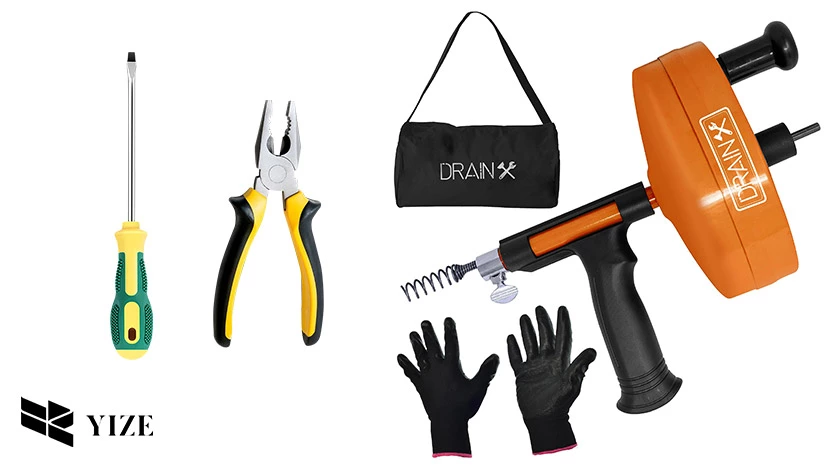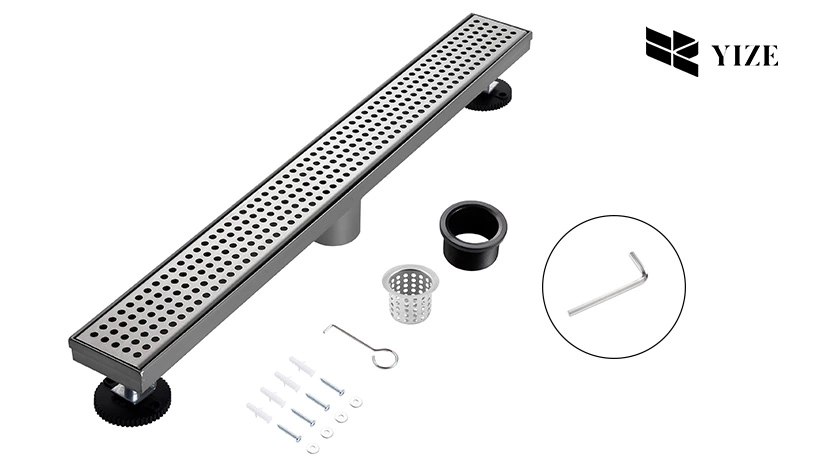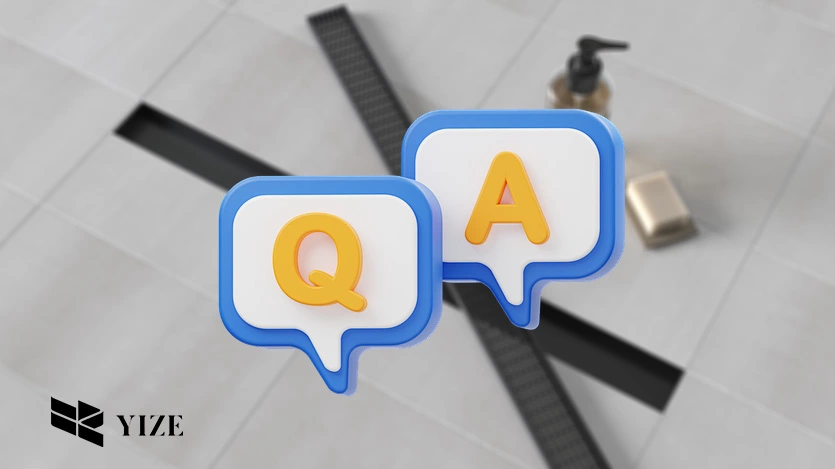
I. Introduction
Your shower drain’s drainage speed decreases when its pipe becomes blocked by waste materials leading to odor problems and water accumulation. Regular shower drain cover removal proves to be quite simple when you follow appropriate techniques. This guide teaches you six simple steps to successfully extract a shower drain cover. This task becomes more accessible when you stick to these instructions carefully.
Understanding the drainage cover variety is important because it affects the method used for removal. Each drain cover variety needs its unique removal approach while the methodology remains different between types. You will need three things to remove your drain cover: a flathead screwdriver and pliers and any proprietary removal tool according to your drain type. Getting the right tools becomes essential because it enables faster work.
Here are six detailed steps to help you master the process:
II. Identify Your Drain
Search your bathroom for the exact type of cover protecting your shower drain. Examine the drainage system while studying the way the cover connects to drain providers. The most common types of drain covers include:
- Flat covers: These drain covers maintain a smooth surface which equally extends with floor surfaces.
- Snap-in covers: The drain opening receives these components that stay fixed through tension force.
- Screw-in covers: Screw attachments lock these drain covers in place but they remain visible to the naked eye.
- Covers with a set screw: The setscrew of these drain covers resides either on the side or the top in a tiny hidden position.
The identification of drain cover types assists you when choosing appropriate removal techniques.
III. Is It a Flat Cover?
Identifying and extracting flat drain covers proves to be the easiest drain maintenance task among similar approaches. There are no screws or snaps to see since flat drain covers maintain a smooth design throughout their surfaces.
How to remove it: You should use a flathead screwdriver to carefully lift the edge of the cover by prying it. The rim needs a screwdriver to slip beneath it followed by slow and meticulous lifting. Pour penetrating oil drops onto the cover surface edges when residue glue prevents free movement. This procedure dissolves the sticking substance to allow easy removal. Keep your force at levels that stop you from breaking anything.
As a next step examine whether screws or hidden adhesive clips currently keep the cover from moving.
IV. Does the Cover Snap In?
Snap-in drains use opening fitments which attach to drainholes through tensile gripping or tiny gripping tabs.
- How to remove it: To remove the cover easily apply a flathead screwdriver or butter knife at its edge. Gently wiggling the tool will break away the cover pressure that blocks its removal. Pull the cover loose using a circular movement reaching all around the edges of its frame. To improve your grip when removing hard to pull covers you should use needle-nose pliers.
Before reusing the cover remember to be careful about not degrading the cover material with your actions.
V. Is It a Screw-In Cover?
Screw-in drain covers remain stable through clear screws which often sit at the middle or perimeter of the cover.
- How to remove it: To remove fasteners from a screw-in cover select a proper screwdriver matching between flathead or Phillips types. When storing screws make sure to keep them in a container to prevent misplacing. After unscrewing you can lift the cover using your fingers or a flathead screwdriver. To loosen stuck drain covers apply lubricant and use gentle upward pressure until they unlodge.
Look for tighter security by inspecting the whole surface area for any unnoticed tiny screws.
VI. Do You See a Set Screw?

A few drain covers feature tiny set screws that maintain their closed position. A particular screw which usually rests on the side moldings may go unnoticed by most people.
- How to remove it: A thorough examination around drain cover edges can reveal a hidden set screw. Remove the screw with either a small Allen wrench or screwdriver tool. The easy lift becomes possible after you remove the loose set screw. Handle the components carefully to prevent screw wear as well as thread damage.
Application of a rust remover or penetrating oil will aid in freeing difficult set screws while cleaning up rust.
VII. You May Need a Special Tool
A few drain covers need specific tools to remove them. Special tools exist for discrete drains and rugged cover applications.
- What to do: Follow the manufacturer directions or product information which shows if special tools will be required. Many drain cover removals utilize different methods such as drain keys, pliers and company-branded wrenches. Contact an expert or ask at your local hardware store if you have doubts regarding the removal process.
The correct tool will perform the job quickly without causing any accidental damage to the process.
VIII. Conclusion
Before continuing further check the drain area for buildup then clean everything properly. Be sure to first remove the drain opening of dirt and hair and soap scum to achieve better drainage and clog prevention. For reinstalling your original cover wash it using mild detergent then make sure it dries completely before installation.
A corroded drain cover requires immediate replacement with a brand new unit. Your drain replacement cover must match both your drain opening’s specific size and type in order to install properly.
Frequently Asked Questions (FAQs)

Q1: Can I remove a shower drain cover without tools?
The installation of snap-in covers allows simple hand removal while a butter knife provides extra assistance only. Set-screw and screw-in drain covers need screwdriver tools for their successful removal.
Q2: What if the drain cover is stuck?
Penetrating oil together with rust removers work to help release stuck drain covers. Namely patience should remain your priority because excessive force will endanger the drain’s integrity.
Q3: How do I know which type of drain cover I have?
To determine which cover you have you must investigate its appearance. A screw-like feature or top or set screw or tension tab typically reveals the cover type. Manufacturers’ guidelines should be checked when in doubt.
